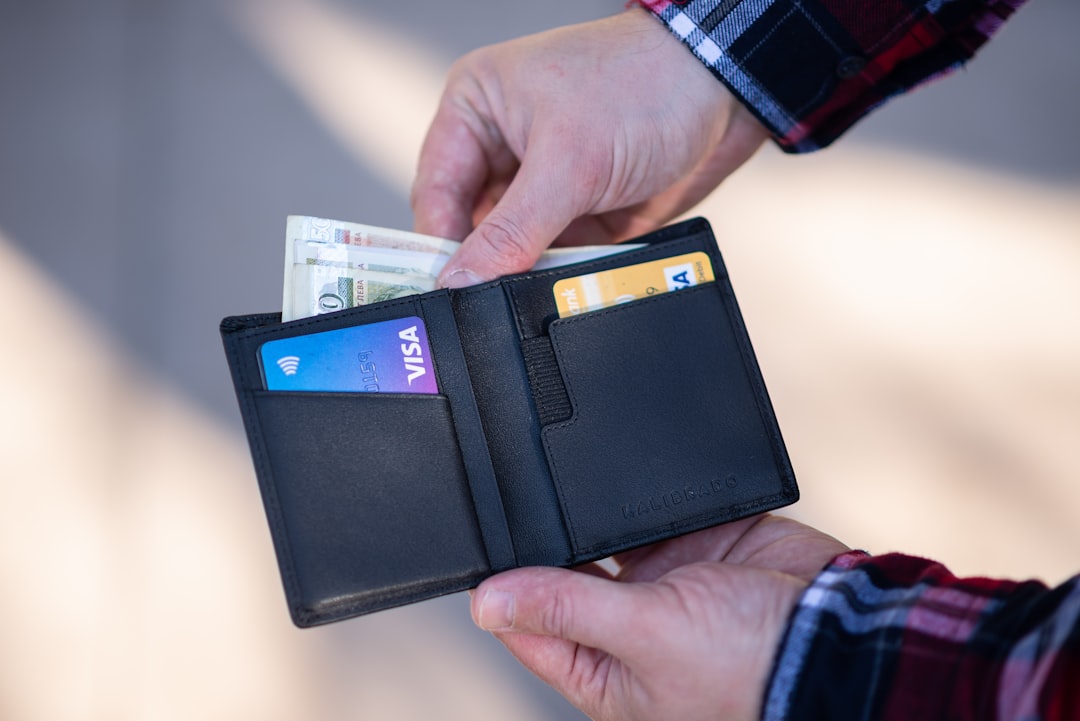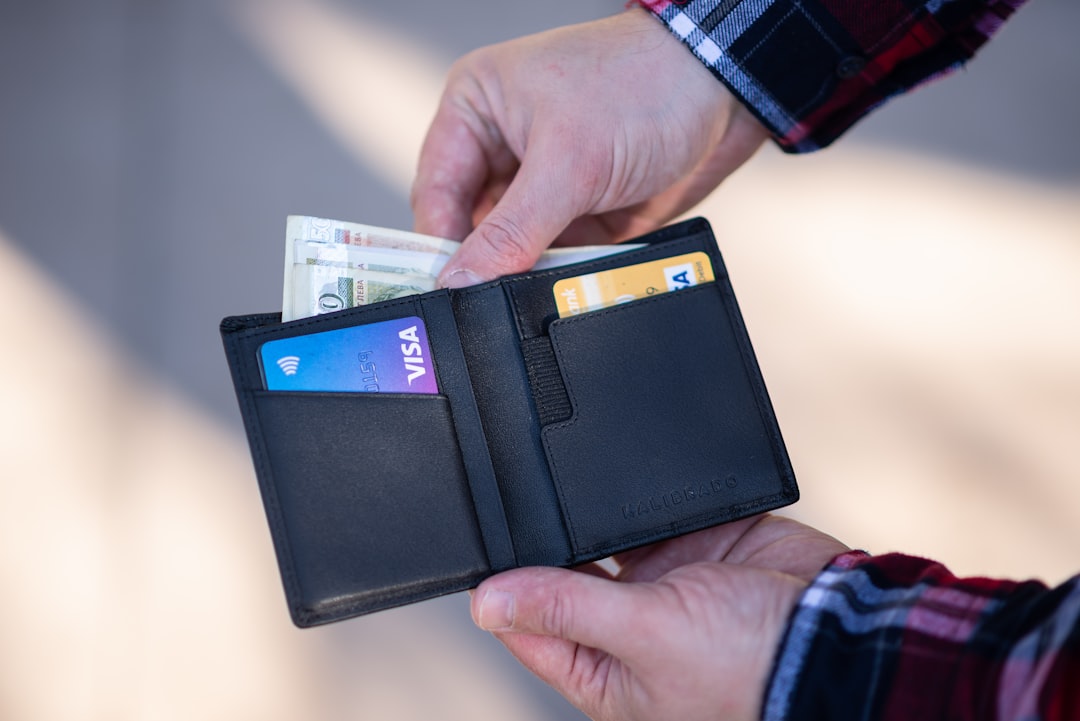Maximizing Value A Step-by-Step Guide to Transferring Chase Ultimate Rewards Points Between Cards in 2024
Maximizing Value A Step-by-Step Guide to Transferring Chase Ultimate Rewards Points Between Cards in 2024 - Understanding Chase Ultimate Rewards Point Transfer Basics
The core of leveraging Chase Ultimate Rewards lies in understanding how to transfer your points effectively. Navigating the transfer process is straightforward: you'll find the transfer option within your Chase account, often located under the travel section. However, it's important to remember that not every Chase card allows for point transfers. Only those cards that specifically earn Ultimate Rewards points will offer this feature.
The real potential for maximizing value emerges when you transfer your points to certain airline and hotel partners. While there are various options, partnerships with programs like Singapore Airlines and Hyatt frequently provide strong returns, especially when redeeming for premium travel experiences. This could mean securing flights in luxurious cabins or booking high-end hotel rooms. One notable feature is the generally quick processing time for transfers. Typically, once you initiate the transfer to your chosen airline or hotel partner, the points are available immediately for use. While the process is easy to use, you need to think critically before transferring.
To initiate a points transfer within the Chase Ultimate Rewards ecosystem, you'll need to access your account online and navigate to the "Travel" section, where you'll find an option for transferring points to partner programs. This capability allows you to shift points between compatible Chase cards, a tactic that can be instrumental in maximizing the overall value of your rewards.
Chase Ultimate Rewards points offer various redemption options beyond simply transferring them, encompassing cash back, gift cards, and travel-related bookings. Certain transfer partners, such as Singapore Airlines KrisFlyer, United Airlines MileagePlus, British Airways Avios, and World of Hyatt, are typically seen as providing the highest potential value. Particularly for those chasing premium travel experiences, transfers to airlines like Singapore Airlines can yield exceptional value for top-tier cabin awards like the coveted Singapore Suites.
One practical aspect is the ability to consolidate points from multiple Chase cards linked to your household into a single pool, providing more flexibility before initiating transfers. While there are numerous cards in the Chase lineup, the Sapphire Preferred Card stands out with its attractive sign-up bonus – 60,000 Ultimate Rewards points after spending $4,000 early on. This makes it an alluring option for individuals looking to enter the Chase ecosystem.
It's worth noting that the transfer process is often instantaneous, meaning points are typically immediately available to use with a partner after transfer completion. However, to make truly informed decisions, it's a good practice to examine the award charts of each airline or hotel program you're considering to assess potential value before making a transfer. Additionally, the points can be redeemed for statement credits, another pathway for value generation, but the ideal strategy will depend on the circumstances.
While it's tempting to focus solely on transfers to airline and hotel partners, it's crucial to remember that statement credits can sometimes represent an effective way to extract value from your rewards as well. There's no single 'best' approach; the most efficient utilization of points will depend on each individual's specific travel goals and spending habits.
Maximizing Value A Step-by-Step Guide to Transferring Chase Ultimate Rewards Points Between Cards in 2024 - Identifying Eligible Chase Cards for Point Transfers in 2024
Within the Chase Ultimate Rewards ecosystem, the ability to transfer points between eligible cards is a crucial element in maximizing the value of your rewards in 2024. Not all Chase cards participate in this feature, so it's essential to ensure your card earns Ultimate Rewards points to unlock this option. The core benefit of this inter-card transfer ability is the potential to accumulate a larger pool of points for more substantial redemptions, whether that's booking flights or hotel rooms. This flexibility becomes even more valuable when considering transferring points to various airline and hotel partners, many of which can deliver excellent value, particularly for those seeking premium travel experiences. It's important to evaluate the specific benefits associated with each of your eligible Chase cards to pinpoint the best path for your individual travel goals. Understanding the nuances of which cards are eligible and how to strategically leverage transfers is a key step toward getting the most out of your Chase Ultimate Rewards program.
When delving into the world of Chase Ultimate Rewards, a key aspect is pinpointing which of your Chase cards are eligible for point transfers in 2024. It's not a given that all Chase cards allow for this – it's tied to the specific rewards structure of the card. For instance, the Chase Sapphire Preferred, Reserve, and Ink Business Preferred are commonly known to have this transfer capability. Recognizing how each card earns points is a critical piece in crafting a point-accumulation plan.
Interestingly, even business cards like those in the Ink series can have their points transferred, as long as they are connected to a personal Ultimate Rewards account. This characteristic lets you combine points from both personal and professional spending, which can be very useful when aiming for a specific redemption.
While many transfers occur at a 1:1 ratio, meaning 1,000 Ultimate Rewards points translate to 1,000 points in a partner program, this isn't always the case. Some partners may have different exchange rates. This is a detail that can affect the overall value of your points depending on the specific program you're aiming for.
One factor to watch out for is that points from Chase's no-annual-fee cards won't expire as long as you maintain the account. That said, it's always a good idea to stay on top of your account activity if you plan on transferring often, as this can affect your ability to keep your account active.
Chase occasionally runs promotions that offer bonus point transfers to certain airline programs. These opportunities can significantly boost the value of your points. So, keeping an eye out for these limited-time offers can be a strategic approach.
It's intriguing that you can merge points from multiple Chase cards linked to the same account holder, which gives you more choices. This is also possible for some family members through a joint account. This aspect adds flexibility to the transfer process and allows you to have a larger point pool for a big redemption.
The timing of the transfer is something to keep in mind. While transfers are often instantaneous, remember time zone differences and potential processing times when transferring points for an imminent booking, especially for something like a flight.
Something to note is that even when you have enough points to transfer, the availability of flights or hotel rooms is still a limiting factor. Therefore, it's useful to have some awareness of the usual availability for the kind of redemption you are considering before a transfer.
Another point to consider is that some cards have higher rewards for specific spending categories. When transferring points earned through these bonuses, you can sometimes end up with a much higher value redemption with airline or hotel partners compared to transfers using standard points.
It's also crucial to realize that the level of your Chase Ultimate Rewards card influences the type of transfer options you have access to. Higher tiers, like the Sapphire Reserve, may come with extra perks like travel protections that can add to your rewards experience.
These are some nuances in the world of Chase Ultimate Rewards transfers that can affect your decisions. Being thoughtful about these can help you maximize the value of your rewards.
Maximizing Value A Step-by-Step Guide to Transferring Chase Ultimate Rewards Points Between Cards in 2024 - Navigating the Chase Ultimate Rewards Portal
The Chase Ultimate Rewards portal serves as a central hub for maximizing the value of your earned points. It offers a distinct advantage when booking travel, often providing a higher return compared to using points for other redemptions. You can easily access this portal via the Chase mobile app, making it convenient to monitor your points and explore diverse redemption possibilities. Understanding the portal's nuances, like minimum point requirements for cash back, is also crucial to strategize your points accumulation. Different Chase cards have different earning rates, and recognizing this difference is important when plotting how to earn enough points for travel, purchases, or statement credits. In the current landscape of credit card rewards programs, familiarity with these intricacies can make a difference when trying to meet your goals.
The Chase Ultimate Rewards portal offers a fascinating array of features for managing and maximizing your points. One interesting feature is the near-instant email confirmations that are sent whenever you transfer points. This can help keep track of all your transactions. You might find some airline partnerships occasionally offer bonus point transfer ratios, sometimes exceeding the standard 1:1. This can be advantageous if you are trying to maximize value, particularly for premium or rarer flight options.
While it's not possible to directly transfer points between family members, it's possible to open joint accounts, enabling point pooling for families looking to maximize value on collective travel plans. Surprisingly, you can often pool points earned through both personal and business Chase cards, as long as they are linked to the same Ultimate Rewards account. This can be a useful technique for maximizing your overall points for bigger redemptions.
When you transfer points to British Airways Avios, you gain the flexibility to use them on a broader network of partner airlines, a feature not typically found in standard frequent flyer programs. Chase will occasionally run promotions with partners, providing a limited-time opportunity to earn bonus points when you transfer. If you are signed up for email updates, these promotions may be useful.
Interestingly, even though points from no-annual-fee Chase cards generally don’t expire as long as you keep the account open, accounts that are not used regularly to earn points may still have restrictions that lead to some restrictions on the points you have. Therefore, maintaining some level of activity may be useful for keeping your account healthy. Although transfers are typically instantaneous, remember that some partner systems may have processing delays or maintenance windows. If you are transferring points for an upcoming booking, you should confirm the usual processing time before making the transfer to ensure the points are there when you need them.
The card tier you have with Chase can impact the partner programs available for transfers. Higher-tier cards like the Sapphire Reserve have more advanced features, including access to higher-end partners for transfer. This also means you can leverage these benefits to increase your point value. It's beneficial to scrutinize award charts for each potential partner airline or hotel to understand how many points are needed before making a transfer. This pre-planning step allows you to carefully make decisions that ensure you get the most out of your points for a given redemption.
These details are only a few of the intricacies of the Chase Ultimate Rewards ecosystem. By understanding and being aware of these nuances, you can make more educated decisions when transferring your points, ultimately aiming to get the most reward for your efforts.
Maximizing Value A Step-by-Step Guide to Transferring Chase Ultimate Rewards Points Between Cards in 2024 - Selecting the Right Transfer Partner for Your Travel Goals
When deciding where to transfer your Chase Ultimate Rewards points, it's essential to consider your travel plans and desired destinations. The value you get from each transfer can differ, as airlines and hotels have varying redemption rates and award charts. Some transfer options, such as those to Southwest Airlines or Hyatt hotels, have the potential to offer a higher return on your points than using them directly through Chase for travel bookings. It's smart to keep an eye out for any current promotions that might offer better transfer ratios or bonuses with particular partners. It’s also good practice to review availability for potential redemptions before transferring – a flight or hotel room you want might not be available even if you have enough points. By carefully choosing the right transfer partners based on your travel style and goals, you can significantly improve your rewards and achieve more fulfilling travel experiences.
Chase Ultimate Rewards points can be transferred to a variety of airline and hotel loyalty programs, offering a potential path to better value compared to using them directly for travel through Chase. While many transfers operate on a 1-to-1 basis, some airlines might have different exchange rates, potentially influencing the ultimate value you receive depending on which program you choose. It's intriguing that you can sometimes expand your travel options by transferring points to airlines that are part of larger alliances like Oneworld or Star Alliance. This can lead to a greater range of flights and potentially better availability when you are looking at a particular trip.
One interesting feature is that you can combine points from both your personal and business Chase cards if they are linked to the same Ultimate Rewards account. This can be useful if you are trying to save up points for a specific travel goal. It's important to remember that many partner programs use complicated award charts that can impact your point value based on when you are travelling. This means you need to dig into the award chart before you transfer your points to figure out how much value you will really get from them for your specific trip.
Chase sometimes runs promotions where they give you a bonus when you transfer points to a specific airline. These deals can make transferring your points more valuable, so keeping an eye on them can be a helpful tactic if you want to maximize your return. Although the transfer process is often instantaneous, some airlines may take a few days to process a transfer. Understanding how long each airline takes to handle a transfer is important if you are trying to book a trip that is coming up soon.
Certain Chase cards offer bonuses for specific types of purchases like travel or dining. If you make a bunch of purchases in these categories, you could potentially transfer those bonus points and get even more value for your travel. It's worth remembering that even though points earned through some no-annual-fee Chase cards generally don't expire as long as your account is open, a lack of activity on your account could affect your options for transferring or using your points. This means that if you want to keep transferring points in the future, you need to keep the account active. Joint accounts can be useful for families, allowing everyone to pool their points together to book a big trip. This way, you don't have to individually transfer points back and forth.
Having a higher-tier card like the Sapphire Reserve can not only give you access to more transfer partners but can also come with perks like travel insurance or higher point-earning rates. This means that the type of Chase card you have could influence the overall value you get from your rewards. You should carefully evaluate the award charts for each partner program you're considering before you transfer to understand how many points you will need to book a certain travel option. That way, you are sure to get the most out of your Chase points.
Maximizing Value A Step-by-Step Guide to Transferring Chase Ultimate Rewards Points Between Cards in 2024 - Executing the Point Transfer Process Step-by-Step
Transferring your Chase Ultimate Rewards points is a relatively easy process. You'll start by logging into your Chase account and finding the Ultimate Rewards section, usually within the travel area. From there, you'll find options to transfer points. When transferring, keep in mind that you have to send points in blocks of 1,000. Then, select the program you want to transfer to and double-check that you've entered the correct loyalty account details. Since some programs don't follow the standard 1:1 transfer ratio, it's always a good idea to check the transfer terms before confirming your transfer. It's worth being aware of any point transfer bonuses or promotions that are happening at the moment, as this can affect how much your points are worth. Overall, understanding these steps and doing a little planning ahead of time can help you make the most of your points when you transfer them.
1. **Points Don't Always Expire:** It's noteworthy that some Chase cards, even those without an annual fee, don't have point expiration dates as long as you keep the account active. This is a bit unusual for credit card rewards, offering a chance to gather points at your own pace.
2. **Not All Transfers Are 1:1:** While many transfers of Chase Ultimate Rewards points to airline and hotel programs occur at a 1:1 ratio, some partners deviate. This means 1,000 Chase points might not always equal 1,000 partner points, which can affect the overall value of your points for specific redemptions.
3. **Points Are Easy to Transfer, but Not Always Usable:** It's relatively easy to move points from Chase to partners, but that doesn't guarantee you'll actually be able to use them for the flight or hotel you want. Sometimes, even if you have enough points, the desired reward might not be available, particularly during popular travel times.
4. **Combining Points Across Your Chase Cards:** It's possible to merge points from personal and business Chase cards if they're linked to the same Ultimate Rewards account. This is handy for accumulating a larger quantity of points for a major redemption, offering more flexibility when aiming for a particular trip.
5. **Taking Advantage of Bonuses:** Occasionally, Chase runs bonus transfer promotions for some airline partners, meaning you can receive a larger number of partner points for your Chase points during a promotional period. This can give a significant boost to the value of your points.
6. **Airline and Hotel Award Charts Matter:** Different airlines and hotels within the Chase Ultimate Rewards ecosystem have varying award charts. These charts dictate how many points you need for a given redemption. This adds complexity, as understanding each program's chart is vital to predicting the true value of your transferred points.
7. **Don't Forget to Check Availability:** It's surprisingly easy to make the mistake of accumulating a bunch of points without knowing if there's actually a reward available at your desired destination. Keeping in mind the availability of flights or hotels before initiating a transfer is important to prevent losing potential value due to an incorrect assumption.
8. **Travel Across Time Zones:** When planning international trips and transferring points for them, keep time zones in mind. This matters because it can affect the timing of the transfer completion, which could be important if you have a booking coming up quickly.
9. **The Importance of Your Chase Card Type:** The specific Chase card you have can affect the overall value of your rewards. Higher-level cards often come with extra perks, like higher-value travel protection. So, recognizing the capabilities of your card can help inform your spending strategy and lead to better choices.
10. **Family Travel Made Easier with Joint Accounts:** For families, joint Chase accounts can facilitate pooling points earned across multiple cards. This can help in reaching the point threshold for a large-scale travel redemption, as opposed to needing to transfer points separately between individual accounts.
Maximizing Value A Step-by-Step Guide to Transferring Chase Ultimate Rewards Points Between Cards in 2024 - Maximizing Value Through Strategic Point Combinations
When aiming to maximize value within the Chase Ultimate Rewards program, recognizing that different cards offer varying returns on spending is key. Combining points from multiple cards, particularly those that earn bonus points in specific spending areas, allows you to potentially boost your rewards. Transferring your points to partners that offer high-value redemptions, such as certain airline or hotel programs, can be very impactful. These kinds of transfers can lead to returns of 5 to 8 cents per point for select rewards, which is significantly higher than the standard 1 cent per point you get when redeeming for other things. However, staying aware of promotional periods and understanding each transfer partner's award chart is crucial. Otherwise, it's difficult to know if you are getting a good deal or not. The ability to carefully think about your point transfer strategy, aligning it with your individual travel ambitions, is what will ultimately lead you to extract the most from your rewards.
When aiming for the most out of your Chase Ultimate Rewards points, it's not just about transferring them, it's about how you transfer them. Sometimes, the most valuable approach is to creatively move points between different programs. This can be more valuable than simply using points directly for a travel booking through Chase. For example, some loyalty schemes have clever ways to combine a few transfers to get the best outcomes.
Different transfer partners offer various conversion rates. Some hotel programs provide a better value than others. Understanding each program's reward details is key to getting the most value.
Chase periodically offers special deals for transferring points to specific airlines. These limited-time bonuses can dramatically boost your points' value, making them much more useful for certain trips. You just have to be watching for them.
Transfers always have to be in chunks of 1,000 points. This means you have to be thoughtful about your options. Sending small amounts of points can limit your choices.
One thing to think about is that just because you have enough points, it doesn't mean you can get the flight or hotel you want. Especially during busy travel seasons, the flight or hotel might not be available, even if you have enough points. This is why it's a good idea to check availability before you actually do a transfer.
A neat feature is that if you have both personal and business Chase cards, you can combine their points into a single pool. This makes it easier to accumulate points for bigger redemptions. It also helps keep track of all your rewards in one place.
By moving your points to airlines that work with larger groups like Star Alliance or Oneworld, you have access to more flights and potential routes. This can give you more options when planning trips.
Airlines and hotel programs have their own point charts to tell you how many points you need for a certain flight or hotel. You really have to dive into the details of these charts to be sure your points are giving you the best value for the trip you have in mind. Otherwise, you might end up spending more points than necessary for a less desirable outcome.
The type of Chase card you have affects which partner programs you can transfer your points to. The higher-tier cards often allow you to send points to a wider variety of partners, which can result in better travel choices.
Even though transfers are usually quick, the time it takes for the points to be available with a partner can vary. You need to understand the transfer timelines for each partner you are considering. This is important, especially when you're trying to book something quickly like a flight.
More Posts from getmtp.com:
- →7 Key Differences Between Credit Cards with Zero Foreign Transaction Fees A 2024 Analysis of Hidden Costs
- →Maximizing Mile Earnings 7 Lesser-Known Credit Card Strategies for Savvy Travelers
- →Southwest Airlines Refund Timeline What to Expect When Canceling Your Flight in 2024
- →Cathay Pacific's New 2024 Online Booking Features 7 Key Updates for Travelers
- →Delta Gold Medallion Phone Support A Deep Dive into Priority Service Lines and Wait Times in 2024
- →Step-by-Step Guide How to Add TSA PreCheck to Your Airline Reservation in 2024




